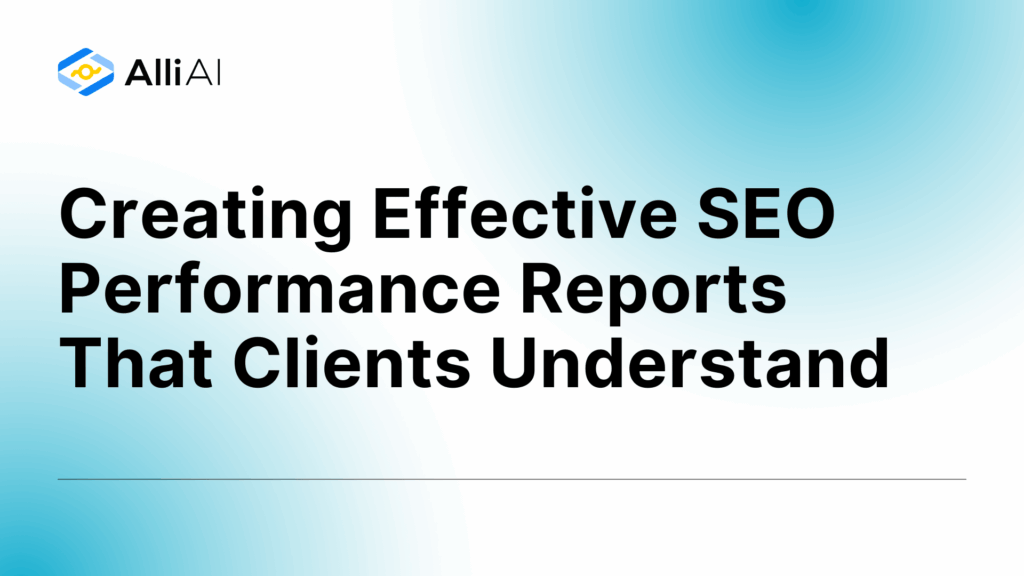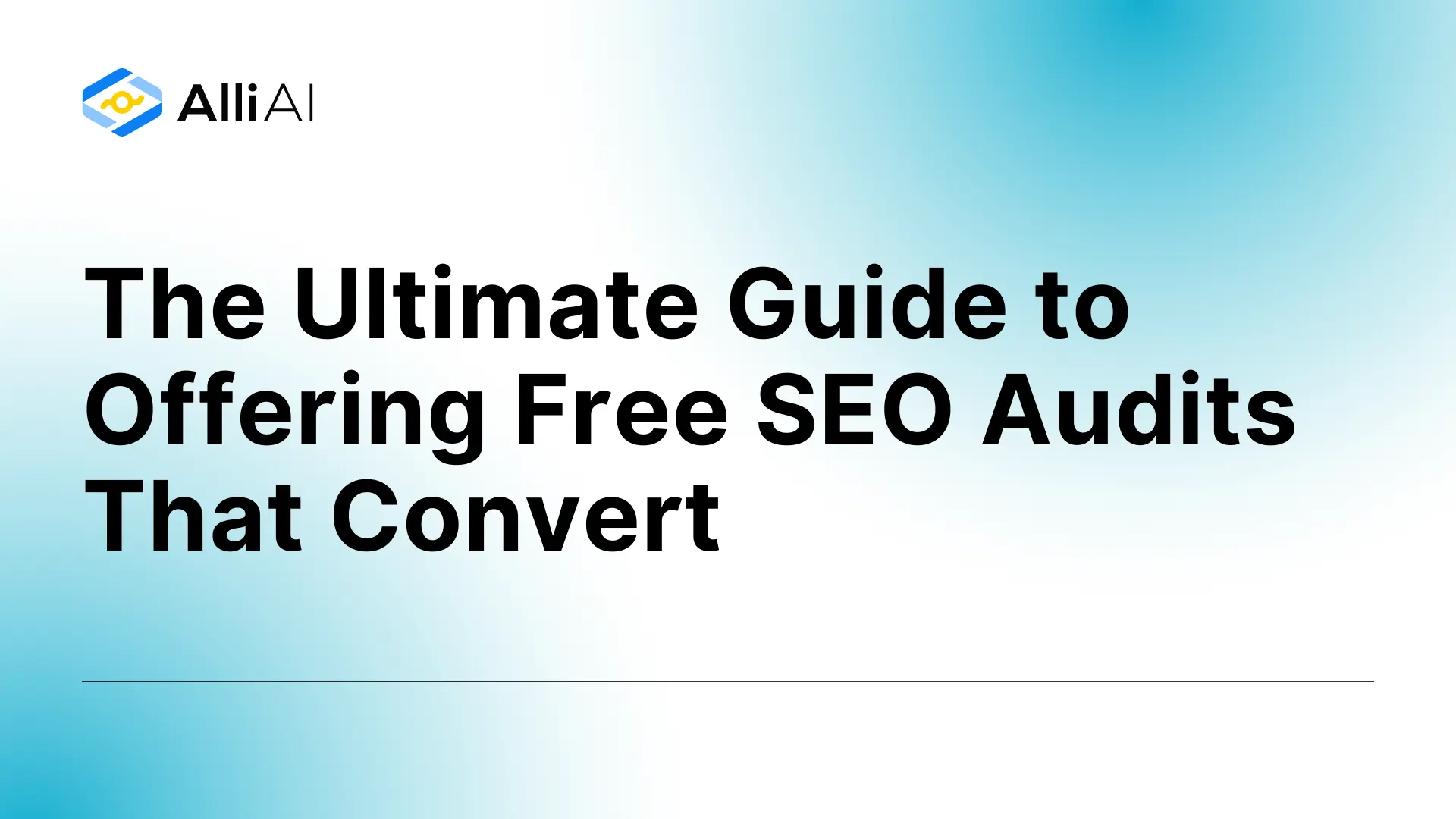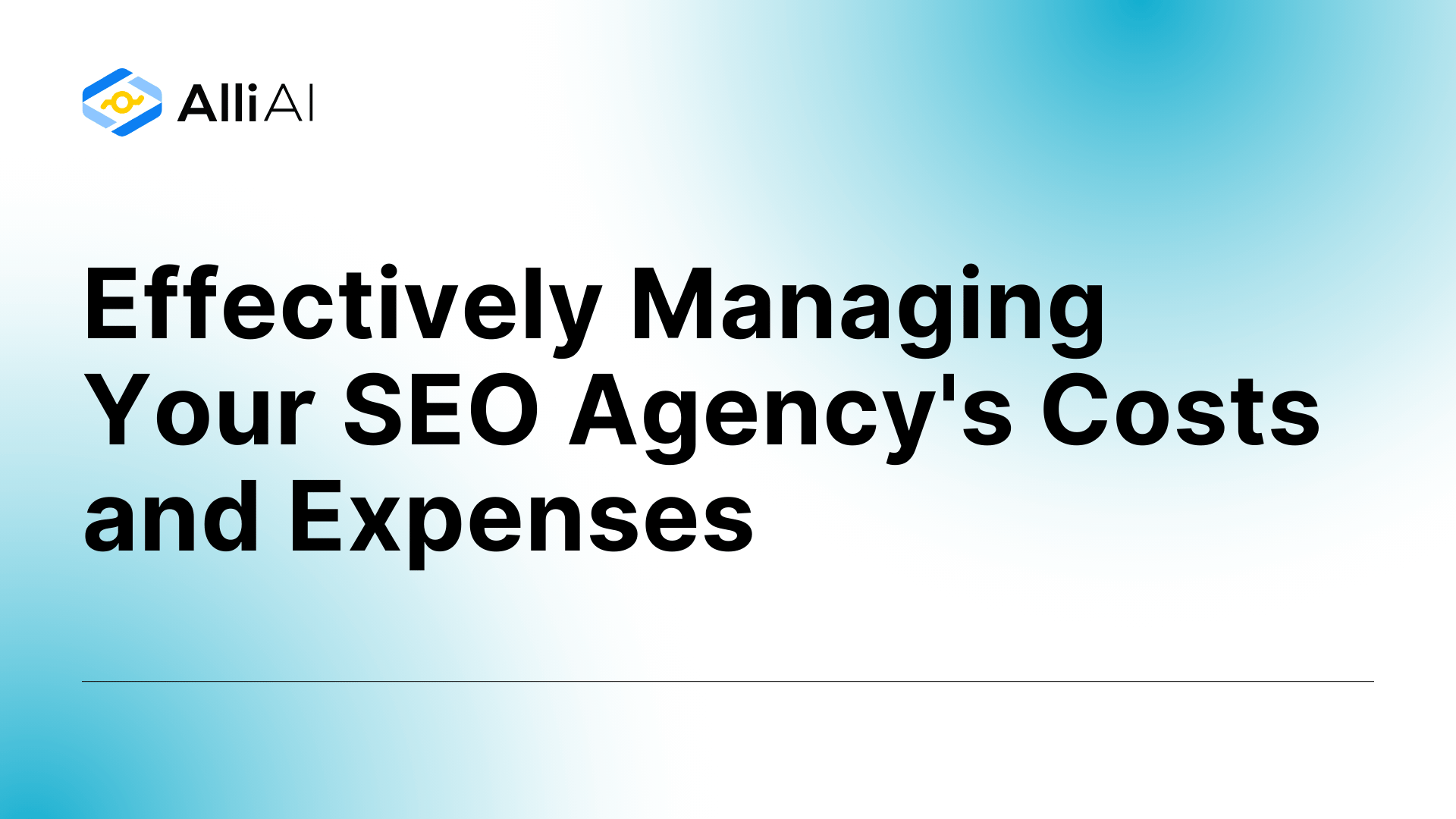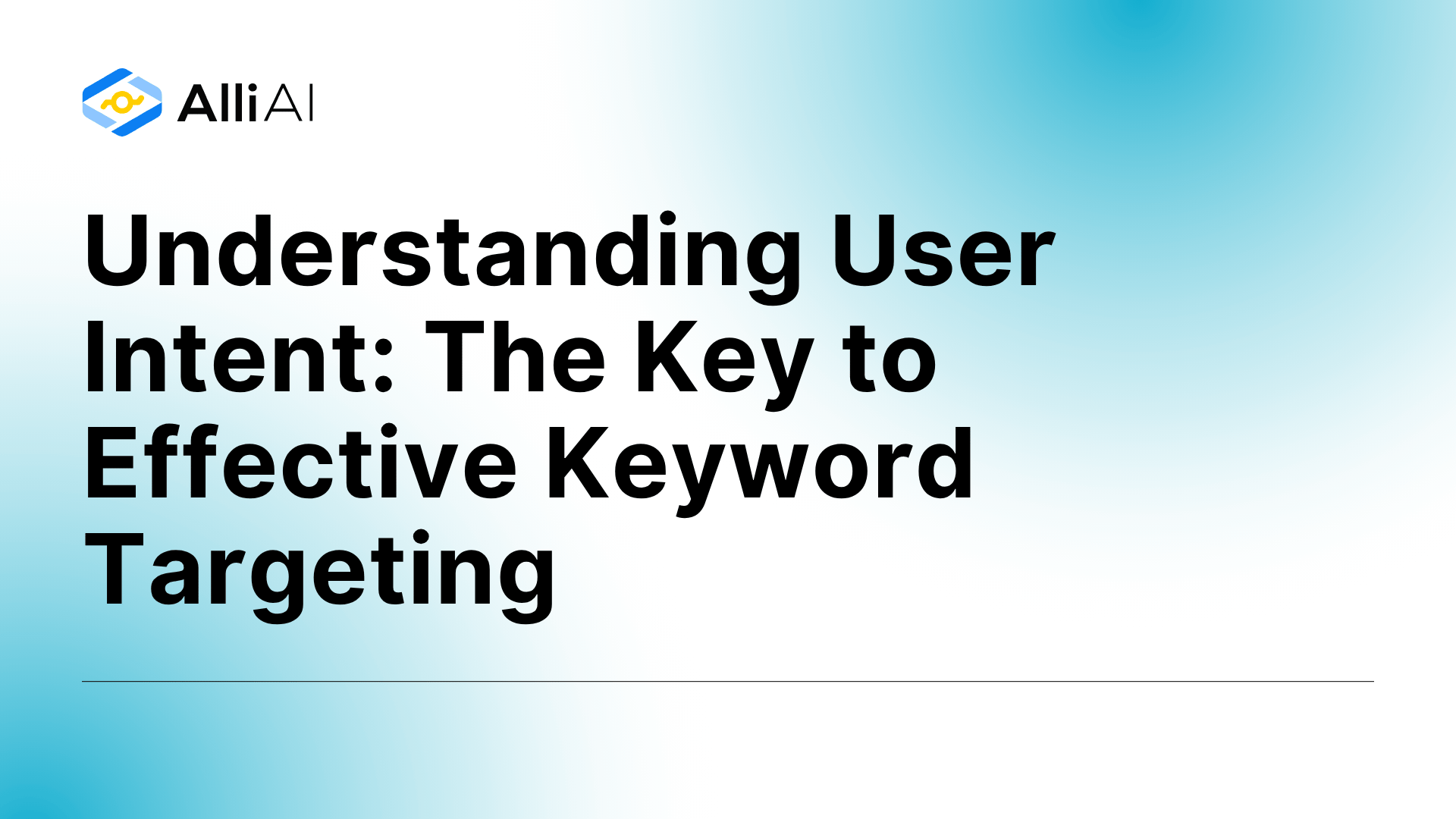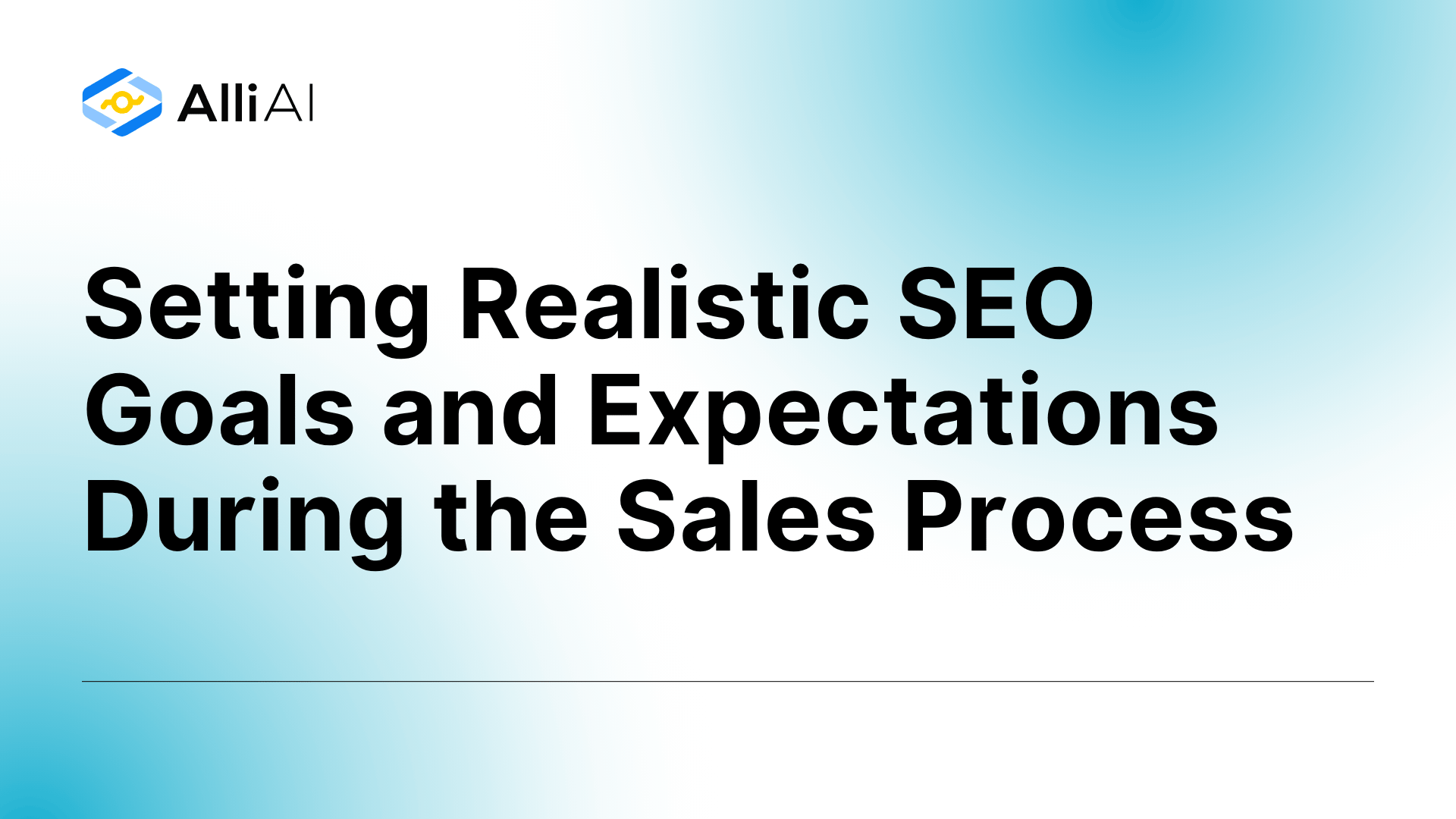Picture this: You’ve just spent hours compiling data, creating charts, and analyzing performance metrics for your client’s SEO campaign. You deliver a comprehensive 20-page report packed with insights, only to receive a lukewarm response and questions like “But what does this mean for my business?”
Sound familiar? You’re not alone. Most SEO reports fail because they focus on impressive-looking data rather than connecting that data to real business outcomes. The solution is to transform your reporting approach from a data dump into a strategic communication tool that clearly demonstrates value and drives action.
This systematic approach has helped agencies retain clients longer, justify budget increases, and position themselves as true strategic partners rather than just service providers. Let’s walk through the complete framework for creating SEO reports that actually move the needle.
Step 1: Understand What Your Client Really Wants to Know
Your first priority is decoding your client’s true concerns beyond the surface-level request for “SEO performance data.”
Start by recognizing that while you’re fascinated by ranking fluctuations and technical metrics, your client is primarily focused on one thing: tangible business impact. They want assurance that their investment is generating meaningful results that contribute to revenue growth, lead generation, or market expansion.
Here’s how to uncover their real priorities:
Schedule a brief discovery call at the beginning of your reporting relationship. Ask these specific questions:
- “What business metrics keep you up at night?”
- “How do you currently measure marketing success?”
- “What would need to happen for you to consider this SEO investment a complete success?”
Document their language patterns. Notice whether they talk about “customers,” “clients,” “leads,” or “users.” Mirror their terminology in your reports to create immediate connection and understanding.
Identify their decision-making style. Some clients want high-level summaries they can digest in two minutes, while others prefer detailed analysis they can study. Tailor your approach accordingly.
Remember, your report should anticipate and answer their underlying questions before they have to ask them. This proactive approach demonstrates that you truly understand their business, not just their website.
Step 2: Eliminate Vanity Metrics That Mislead and Confuse
Now that you understand their priorities, you need to ruthlessly eliminate metrics that look impressive but provide zero business insight.
Vanity metrics are the enemy of effective reporting because they create a false sense of success while obscuring the data that actually matters. Here’s what to avoid and what to focus on instead:
Stop reporting these vanity metrics:
- Raw keyword rankings for low-impact terms
- Total number of backlinks without quality context
- Domain authority scores without explanation
- Social shares that don’t correlate with conversions
- Raw traffic numbers without conversion context
Start focusing on these business-outcome metrics:
- Organic conversion rates and total conversions
- Revenue directly attributable to SEO efforts
- Quality and volume of leads generated
- Cost savings compared to paid advertising
- Customer lifetime value from organic traffic
Create a simple comparison framework for your client. For example, instead of reporting “1,000 new backlinks acquired,” explain “15 high-authority backlinks from industry publications, estimated to increase domain credibility and ranking potential for commercial keywords by 12%.”
The key is connecting every metric to a business outcome. If you can’t draw a clear line from the data point to revenue, leads, or cost savings, consider whether it belongs in your report.
| Vanity Metric Example | Why It Can Be Misleading | Corresponding Value Metric Example | Why It Demonstrates True Business Impact |
| “#1 Ranking for” | Low search volume, minimal traffic or conversion impact | “Top 3 Rankings for 5 Core Revenue-Generating Keywords” | Drives qualified traffic and leads directly contributing to sales. |
| “Total Website Hits” / “Impressions” (unqualified) | Includes irrelevant bot traffic, doesn’t show quality or engagement | “Qualified Organic Traffic to Key Service/Product Pages” | Represents potential customers actively seeking solutions the client offers. |
| “1000 New Backlinks” | Could be low-quality or spammy, risking penalties | “10 New High-Authority Referring Domains in Relevant Industries” | Significantly boosts website credibility and ranking potential for target terms. |
| “Domain Authority Increased by 2 Points” | Can be manipulated; doesn’t directly correlate to business outcomes without context | “Increase in Organic Conversions from Non-Branded Keywords by 15%” | Shows improved visibility for discovery terms leading to tangible business actions. |
| “High Number of Pageviews” (without context) | Users could be lost, or content may not satisfy intent quickly | “Improved Average Session Duration on Key Conversion Pages” | Indicates deeper engagement with content that is critical to the conversion funnel. |
| “Social Shares Increased” | May not drive traffic or leads relevant to business goals | “Lead Generation from Organic Social Traffic to Gated Content” | Connects social activity directly to a valuable business outcome (lead acquisition). |
Step 3: Structure Your Report for Maximum Impact and Comprehension
Your report structure should guide clients logically through performance data, making complex information digestible and actionable.
Think of your report as a story with a clear beginning, middle, and end. Each section should build upon the previous one, creating a comprehensive narrative of progress and strategy.
Follow this proven structure:
Professional Cover Page: Include your agency branding, client name, reporting period, and date. This sets a professional tone from the first impression.
Executive Summary (Most Critical Section): Position this immediately after the cover page. Busy executives often read only this section, so include:
- Overall progress toward established goals
- Top 3-5 key achievements during the reporting period
- Most important recommendations for next steps
- Brief mention of any significant challenges or opportunities
Performance Against Objectives: Directly address their primary concerns by restating their specific business goals and showing measurable progress with supporting data. Use visual elements like progress bars or goal completion widgets.
Key Achievements Section: Highlight significant wins such as major traffic increases to critical pages, new page-one rankings for high-value keywords, or substantial conversion rate improvements. Use annotations on charts to draw attention to these victories.
Organic Performance Deep Dive: Break this into digestible subsections:
- Traffic overview with period-over-period comparisons
- Conversion data showing how organic traffic translates to business results
- Engagement metrics with context explaining any fluctuations
The strategic placement of your Executive Summary at the front respects your client’s time constraints while ensuring your key messages are communicated even if they don’t read the detailed sections.
Step 4: Translate Technical Concepts into Business Language
Your ability to communicate complex SEO concepts in simple, business-relevant terms will determine whether your clients truly understand and value your work.
Start by assessing your client’s SEO knowledge level. A complete novice needs foundational explanations, while a marketing manager might appreciate more nuanced details—though clarity remains paramount for both.
Use these translation techniques:
Replace jargon with analogies: Instead of “we’re targeting long-tail keywords with high search volume,” say “we’re focusing on the specific questions your ideal customers type when they’re ready to buy, rather than broad terms everyone searches for.”
Connect technical improvements to business outcomes: Rather than reporting “improved PageSpeed score from 65 to 85,” explain “your key landing pages now load twice as fast, meaning fewer potential customers get frustrated and leave before converting—we estimate this improvement contributed to the 15% increase in form submissions.”
Use familiar comparisons: Describe backlinks as “recommendations from other reputable websites” and explain that your website’s authority is like “your business reputation—the more quality recommendations you have, the more trusted you become.”
Always include the ‘so what’ factor: After presenting any technical metric, immediately explain what it means for their business. For example: “Bounce rate decreased from 68% to 52%, which means visitors are now finding your content more relevant and engaging, leading to more page views and higher conversion potential.”
Provide context for changes: If organic traffic dropped 10% but conversions increased 15%, explain that you’ve successfully attracted more qualified visitors who are more likely to become customers, which is far more valuable than raw traffic volume.
The goal is empowerment, not oversimplification. When clients understand the reasoning behind your strategies, they become better collaborators and are more likely to approve necessary investments in SEO.
Step 5: Create Compelling Visual Stories with Your Data
Transform complex datasets into clear visual narratives that make trends and achievements immediately obvious to your clients.
The right visualization can communicate a month’s worth of progress in seconds, while the wrong chart type can confuse even simple data. Your choice of visual representation must match both the data type and the insight you want to convey.
Match chart types to your data and story:
Line graphs work best for trends over time: Use these to show organic traffic growth, keyword ranking improvements over several months, or conversion rate changes. Always include period-over-period comparisons to provide context.
Bar charts excel at comparisons: Perfect for contrasting traffic to different landing pages, comparing organic versus paid performance, or benchmarking against competitors. Horizontal bar charts work well when you have long category names.
Pie charts should be used sparingly: Only for showing distributions as percentages of a whole, like traffic breakdown by device type or conversion sources. Limit to 5 categories maximum for clarity.
Scatter plots reveal relationships: Plot metrics like click-through rate against impressions to identify high-visibility content that’s underperforming in attracting clicks—signaling optimization opportunities.
Add strategic annotations directly on charts to highlight key wins. For example, mark the exact point where traffic increased following a specific campaign launch, or note when a technical improvement was implemented and its visible impact.
Use consistent design elements: Maintain the same color scheme, fonts, and styling throughout your report. This creates visual cohesion and reinforces your professional brand.
Choose tools that enhance rather than complicate: Google Looker Studio, Tableau, and even Excel can create professional visualizations. The key is selecting charts that reduce cognitive load rather than adding to it.
Remember, your visualizations should guide your client’s attention to the metrics that matter most for their business goals. A well-chosen chart can make your most important achievements impossible to ignore.
Step 6: Demonstrate Clear Return on Investment
The ultimate measure of SEO success is its contribution to the bottom line, so your reports must clearly connect SEO activities to revenue generation, lead acquisition, or cost savings.
This is where many agencies falter—they can show traffic increases but struggle to tie those improvements to actual business value. Here’s how to make that critical connection:
Calculate SEO ROI using this framework:
- Track conversions originating from organic traffic using Google Analytics goals and events
- Work with your client to determine average lead-to-customer conversion rates
- Establish customer lifetime value (CLV) to assign monetary worth to each lead
- Apply the basic ROI formula: (Revenue from SEO – Cost of SEO) ÷ Cost of SEO × 100
Present compelling ROI statements: “This quarter, organic search efforts generated $47,000 in direct revenue through 23 new customer acquisitions, representing a 340% return on your SEO investment.”
Compare SEO efficiency to paid channels: Calculate the “earned media value” by determining what equivalent organic traffic would cost through Google Ads. For example: “Your organic traffic this month would have cost approximately $15,000 in Google Ads, representing significant ongoing cost savings.”
Focus on lead quality, not just quantity: If possible, integrate CRM data to show that organic leads convert at higher rates or have greater lifetime value than other channels. This positions SEO as a premium lead source rather than just a volume driver.
Track middle and bottom-funnel metrics: Monitor engagement with product pages, demo requests, contact form completions, and other actions that indicate prospects are moving toward conversion.
Address the long-term value: Explain that unlike paid advertising, SEO builds lasting asset value. Organic rankings continue delivering results even if campaign activity decreases, creating compound returns over time.
When you consistently demonstrate positive ROI, you transform SEO from a marketing expense into a revenue-generating investment, making budget increase conversations much more favorable.
Step 7: Address Technical, Content, and Authority Building as Connected Elements
Your reports should explain how technical SEO, content strategy, and backlink building work together synergistically to achieve overall SEO success.
Avoid treating these as separate, unrelated activities. Instead, show your client how each pillar supports and amplifies the others.
Technical SEO Foundation:
Report on critical technical health metrics, focusing on issues that directly impact user experience and search performance:
Core Web Vitals with business context:
- Largest Contentful Paint (LCP): “Your key landing pages now load primary content in under 2.5 seconds, meeting Google’s recommended threshold and reducing bounce rates by 18%” (For more on Core Web Vitals, see Google’s documentation)
- Interaction to Next Paint (INP): “Page responsiveness improved to under 200 milliseconds, creating smoother user interactions that correlate with higher conversion rates”
- Cumulative Layout Shift (CLS): “Eliminated layout shifts that were causing users to accidentally click wrong elements, improving user experience and reducing frustration”
Frame technical debt as ‘revenue at risk’: Instead of simply listing broken links or crawl errors, explain: “23 broken internal links are preventing search engines from discovering your product pages, potentially limiting organic visibility for high-value commercial keywords worth an estimated $8,000 monthly in equivalent ad spend.” Consider using an AI schema markup generator to help address some of these issues.
Content Performance Analysis:
Identify your top-performing content assets and explain their strategic value:
- Pages generating the most organic conversions
- Content attracting high-authority backlinks
- Articles ranking for multiple related keywords
- Blog posts that effectively nurture prospects through the buying journey
Show content gaps as missed opportunities: “Competitors rank on page one for ‘enterprise software security’ (2,400 monthly searches), but we don’t have content targeting this high-value keyword. Creating comprehensive content here could capture an estimated 15-20 qualified leads monthly.”
Authority Building Through Strategic Link Acquisition:
Report backlink growth with emphasis on quality and relevance:
- New links from industry publications and authoritative sites
- Contextual mentions that drive referral traffic
- Improvement in overall domain authority metrics
Demonstrate the synergy: “Our technical improvements enabled better crawling of new content, which attracted 12 high-quality backlinks, which in turn boosted rankings for our target keywords by an average of 8 positions.”
This integrated approach helps clients understand that SEO success requires coordinated effort across all three pillars, justifying comprehensive SEO strategies over piecemeal tactics.
Step 8: Leverage Reporting Tools for Efficiency and Professional Presentation
The right combination of tools can automate data collection, enhance visual appeal, and provide deeper insights while freeing you to focus on strategic analysis and recommendations.
Build your essential toolkit:
Google Analytics 4 and Search Console: These provide the foundation for all performance analysis—traffic, conversions, user behavior, search queries, and technical health data.
Comprehensive SEO platforms (Semrush, Ahrefs, Moz): Essential for keyword tracking, backlink analysis, competitive insights, and technical audits. These platforms often include built-in reporting features. For more ideas on what to include in your reports, AgencyAnalytics has a useful guide.
Dashboarding tools (Google Looker Studio, AgencyAnalytics, DashThis): Consolidate data from multiple sources into unified, visually appealing reports. Many offer white-labeling options and automated report generation. You might also find inspiration from Search Engine Journal’s take on client SEO reports.
Automate strategically, analyze manually: While tools can pull data automatically, your strategic interpretation, custom analysis, and tailored recommendations are where your true value lies. Never send generic, template-based reports. Utilizing an agency SEO tool can streamline some of these processes.
Create custom dashboard views for different stakeholders: The CEO might want a high-level performance summary, while the marketing manager needs detailed tactical insights. Use the same data but present it differently for each audience.
Invest in professional presentation: Clean, well-designed reports enhance client perception of your capabilities and attention to detail. This seemingly minor factor can significantly impact client retention and referral rates.
Maintain data accuracy: Always verify automated reports before sending. Cross-check key metrics between platforms to ensure consistency and catch any tracking issues early.
Your expertise in interpreting data within your client’s specific business context remains irreplaceable, especially when leveraging AI SEO automation software.
Step 9: Craft Strategic Recommendations That Drive Action
Transform your report from a historical document into a forward-looking strategic tool by providing clear, prioritized, data-backed recommendations for future success.
This section often determines whether clients see you as a data provider or a strategic partner. The quality and specificity of your recommendations directly reflect your understanding of both SEO best practices and their unique business needs.
Follow the SMART framework for recommendations:
- Specific: Instead of “create more content,” recommend “develop a 2,000-word comprehensive guide targeting ‘B2B software implementation best practices’ to address the content gap we identified”
- Measurable: Include projected outcomes like “estimated to drive 25-30 qualified leads monthly based on keyword volume and current conversion rates”
- Achievable: Consider their resources and constraints
- Relevant: Tie directly to their stated business objectives
- Time-bound: Provide realistic timelines for implementation and expected results
Limit to 3-5 key recommendations to maintain focus and prevent overwhelm. Rank them by projected ROI or potential impact on their primary goals.
Quantify potential impact wherever possible: “Optimizing your top 10 product pages for featured snippets could increase organic CTR by 15-20%, potentially adding $12,000 in monthly revenue based on current conversion rates.”
Specify required resources: Detail the developer hours needed for technical changes, content creation budget, or additional tools required. This helps with planning and resource allocation.
Connect recommendations to report findings: Each suggestion should stem directly from data presented earlier, creating a logical flow from analysis to action.
Address potential challenges proactively: If a recommendation requires significant investment or technical complexity, acknowledge this and explain why the ROI justifies the effort.
Example of a strong recommendation: “Priority 1: Implement schema markup on all service pages (8 hours development time). Our analysis shows competitors using structured data achieve 23% higher CTRs for commercial keywords. Based on your current impressions for service-related terms (45,000 monthly), this could drive an additional 150-200 qualified visitors monthly, worth approximately $6,000 in equivalent ad spend.”
Step 10: Address AI’s Impact on Search and Future-Proof Your Strategy
As AI transforms search through features like Google’s Search Generative Experience, your reports must acknowledge these changes and adapt your strategies accordingly.
This demonstrates forward-thinking expertise and positions you as an agency that stays ahead of industry evolution rather than reacting to changes after they impact performance.
Acknowledge the changing landscape honestly: Explain that AI-generated search summaries may reduce traditional click-through rates for some query types, but frame this as an opportunity to adapt strategy rather than an insurmountable obstacle.
Monitor AI visibility using specialized tools: Platforms like Knowatoa and Nightwatch can track how often your client’s content appears in AI-generated responses or featured snippets that feed these systems.
Analyze content performance in AI contexts:
- Is your content being cited as a source in AI summaries?
- Are your informational pieces capturing featured snippets?
- How does your AI visibility compare to competitors?
Adapt content strategy for AI optimization:
- Structure content explicitly for Q&A formats
- Ensure factual accuracy and authoritativeness (E-E-A-T compliance)
- Create highly specialized, niche content that AI hasn’t fully covered
- Focus on building topical authority in your client’s specific domain
Develop new success metrics: Traditional click-through rates may become less central for informational queries. Start tracking:
- Mentions or citations in AI responses
- Impressions within AI-generated content
- Brand awareness impact from AI visibility
- Assisted conversions from AI-exposed prospects
Include AI adaptation in your recommendations: “To maintain visibility as search evolves, we recommend restructuring your FAQ content to directly answer the specific questions prospects ask, making it more likely to be featured in AI summaries and voice search results.”
Position this as competitive advantage: Clients who adapt early to AI-influenced search will capture market share from slower-moving competitors. Frame AI preparation as strategic positioning rather than defensive necessity.
This proactive approach reassures clients that their SEO investment is being managed with future trends in mind, strengthening their confidence in your long-term strategic thinking.
Step 11: Avoid Common Reporting Pitfalls That Undermine Client Trust
Awareness of frequent reporting mistakes allows you to consistently deliver reports that build rather than erode client confidence in your capabilities.
The most damaging mistakes include:
Data dumping without interpretation: Cramming reports full of charts and numbers without adequate explanation leaves clients confused about what the data means for their business. Always prioritize insights over raw data volume.
Inconsistent reporting structure: If your report format changes dramatically each month without explanation, clients can’t track progress or identify trends. Establish a consistent framework but customize content within that structure.
Ignoring mobile performance: With mobile searches dominating most industries, failing to report on mobile-specific metrics and optimization opportunities represents a critical blind spot.
Poor integration with other marketing channels: SEO doesn’t operate in isolation. Reports should acknowledge how SEO performance relates to PPC campaigns, social media efforts, and other marketing activities.
Misinterpreting correlation as causation: Be careful not to claim that SEO efforts caused improvements that might have resulted from other factors like seasonality, PR campaigns, or product launches.
Using excessive technical jargon: Bombarding clients with SEO terminology they don’t understand creates confusion and can make them feel excluded from understanding their own results.
Failing to customize for individual client needs: Generic, one-size-fits-all reports feel impersonal and often miss what’s most important to each specific client’s business.
To prevent these issues:
- Regularly ask clients for feedback on report clarity and usefulness
- Create a standardized template but customize content for each client’s priorities
- Always explain technical improvements in business terms
- Cross-reference your findings with other marketing activities when possible
- Focus on telling a coherent story rather than presenting disconnected data points
Remember, the goal is building trust and demonstrating value, not impressing clients with the volume of data you can compile.
Step 12: Establish a Feedback Loop for Continuous Improvement
The most effective reporting relationships involve ongoing dialogue and refinement based on client needs and changing business priorities.
Implement these feedback mechanisms:
Quarterly report reviews: Schedule brief calls to discuss what’s working well in your reports and what could be improved. Ask specific questions like:
- “Are you getting the information you need to make decisions?”
- “What would make these reports more valuable for your team?”
- “Are there any metrics or insights you’d like to see that we’re not currently including?”
Track engagement with your reports: Notice which sections clients reference in conversations and which seem to be ignored. This reveals their true priorities and interests.
Adapt to changing business needs: As clients’ businesses evolve, their reporting needs may shift. A startup focused on user acquisition might later need reports emphasizing customer retention and lifetime value.
Create multiple report versions when needed: Some clients benefit from executive summaries for leadership and detailed tactical reports for their marketing teams. Don’t assume one format serves all stakeholders equally well.
Stay ahead of industry changes: Continuously educate yourself on SEO trends, algorithm updates, and new measurement techniques so your reports remain current and valuable.
Document what works: Keep notes on successful reporting approaches, effective explanations of complex concepts, and client responses to different presentation styles. This knowledge base improves all your future reporting.
Be proactive about improvements: Don’t wait for clients to complain about unclear reports. Regularly assess and refine your approach based on best practices and client feedback.
The strongest agency-client relationships involve continuous improvement and adaptation. Clients who feel heard and see their feedback implemented are far more likely to remain loyal and refer new business.
Your Path to Reporting Excellence
Creating SEO reports that truly drive client results requires more than technical knowledge—it demands empathy, strategic thinking, and excellent communication skills. The framework we’ve covered transforms reporting from a necessary administrative task into a powerful tool for client retention, business growth, and strategic positioning.
Remember these critical success factors:
- Always connect data to business outcomes rather than celebrating metrics in isolation
- Structure information to respect your client’s time while providing necessary detail
- Translate technical concepts into language your client’s industry and role can immediately understand
- Provide specific, actionable recommendations backed by data and tied to potential ROI
- Continuously refine your approach based on client feedback and industry evolution
The agencies that master this reporting approach don’t just retain clients longer—they become trusted strategic partners who are consulted on broader business decisions beyond SEO. Your reports become a competitive differentiator that justifies premium pricing and generates referral business.
Start implementing this framework with your next report. Focus on one or two improvements initially rather than overhauling everything at once. Pay attention to how clients respond differently when you emphasize business outcomes over technical achievements.
Your expertise in SEO is valuable, but your ability to communicate that value in terms your clients understand and appreciate is what transforms good agencies into indispensable strategic partners. The time you invest in perfecting your reporting approach will pay dividends in client satisfaction, retention, and business growth for years to come.
